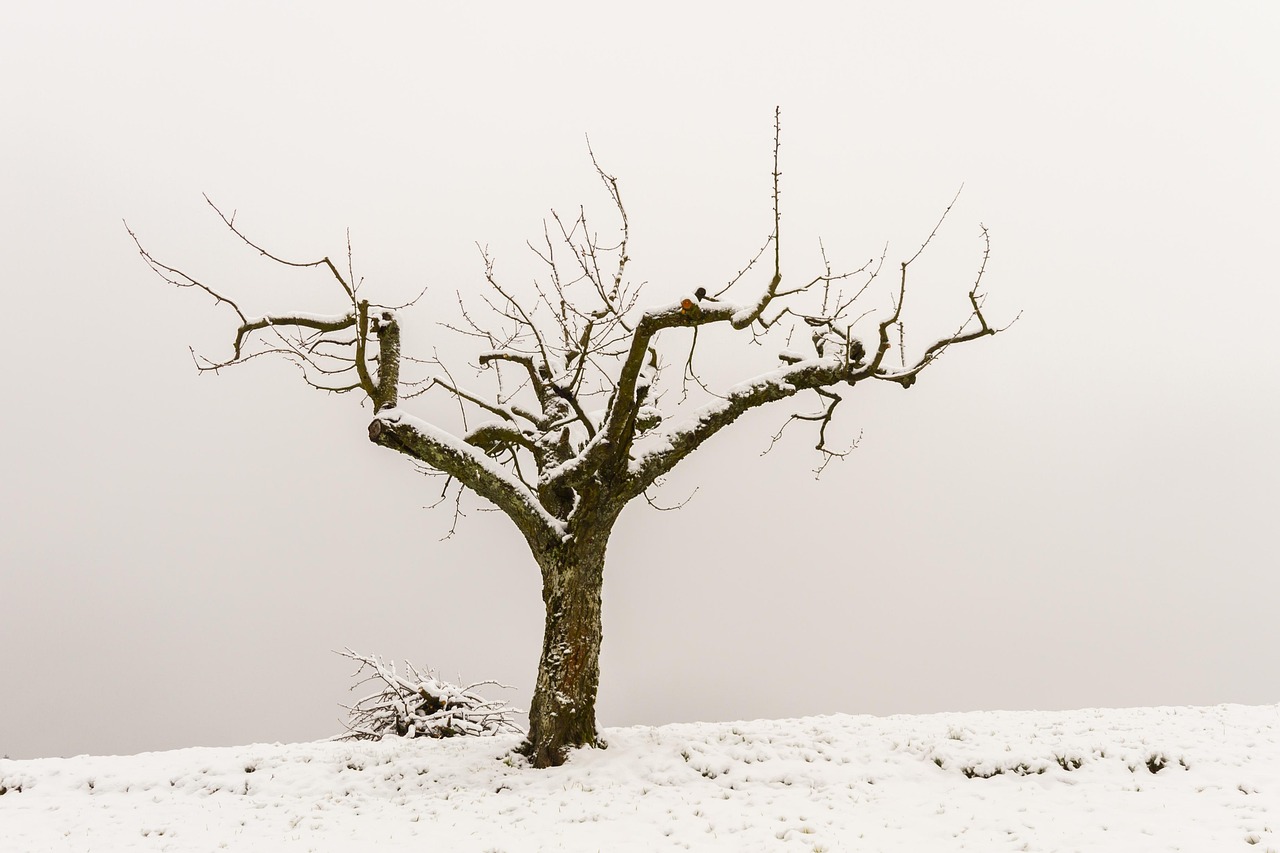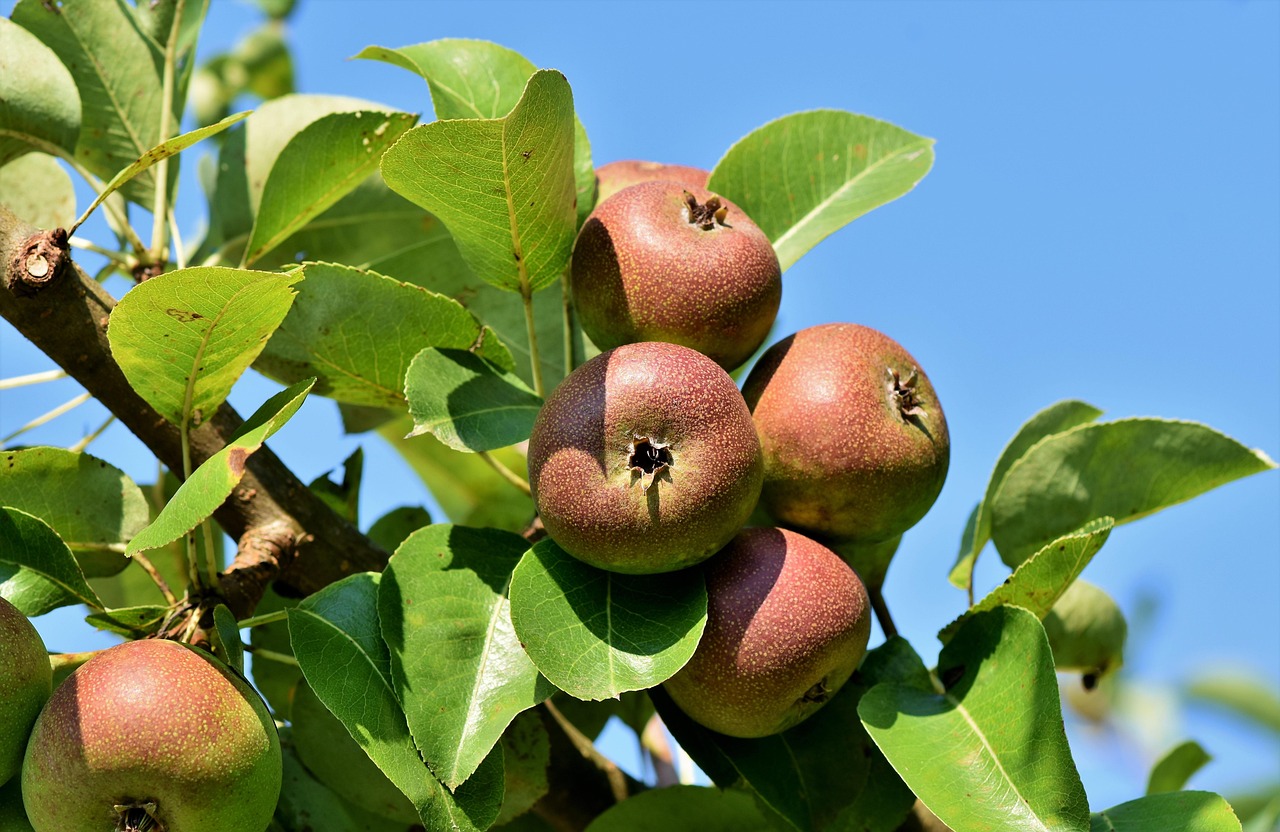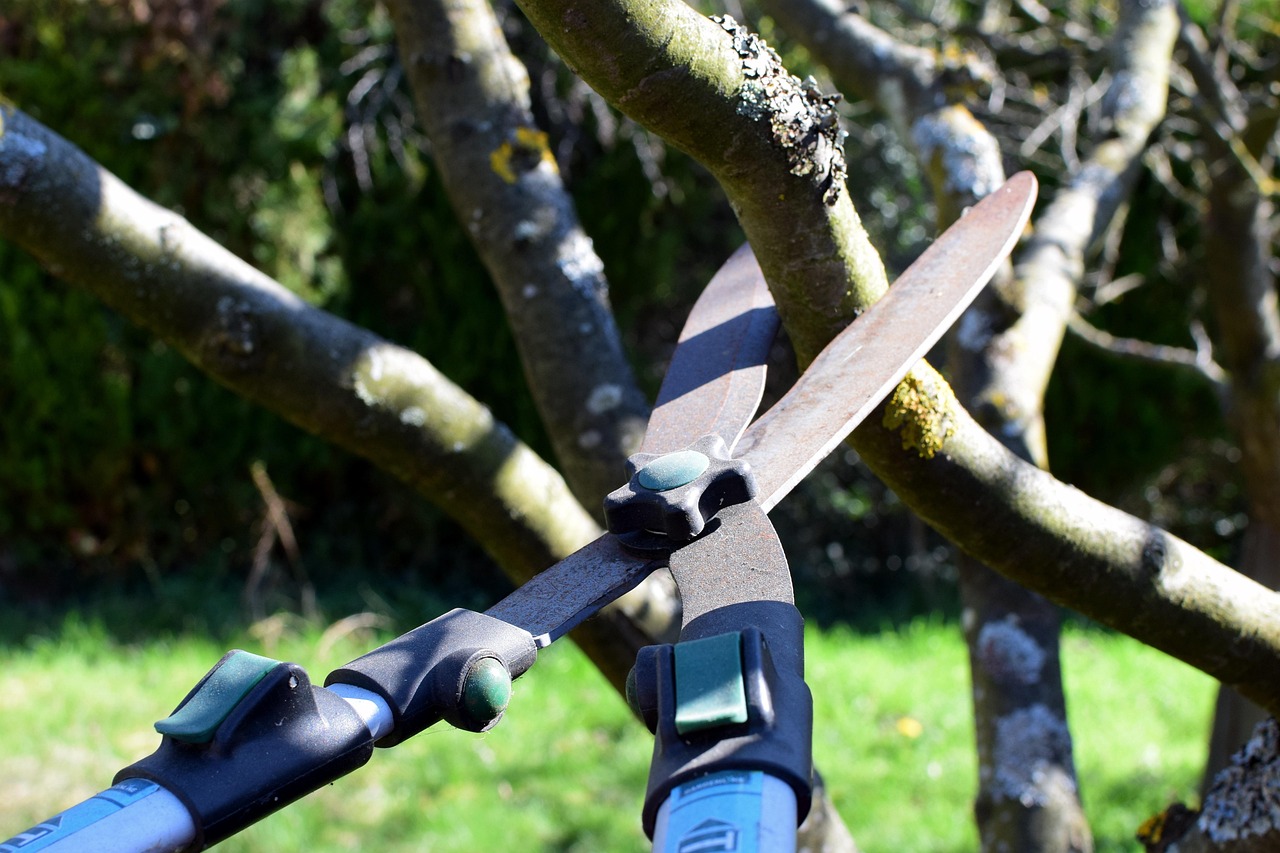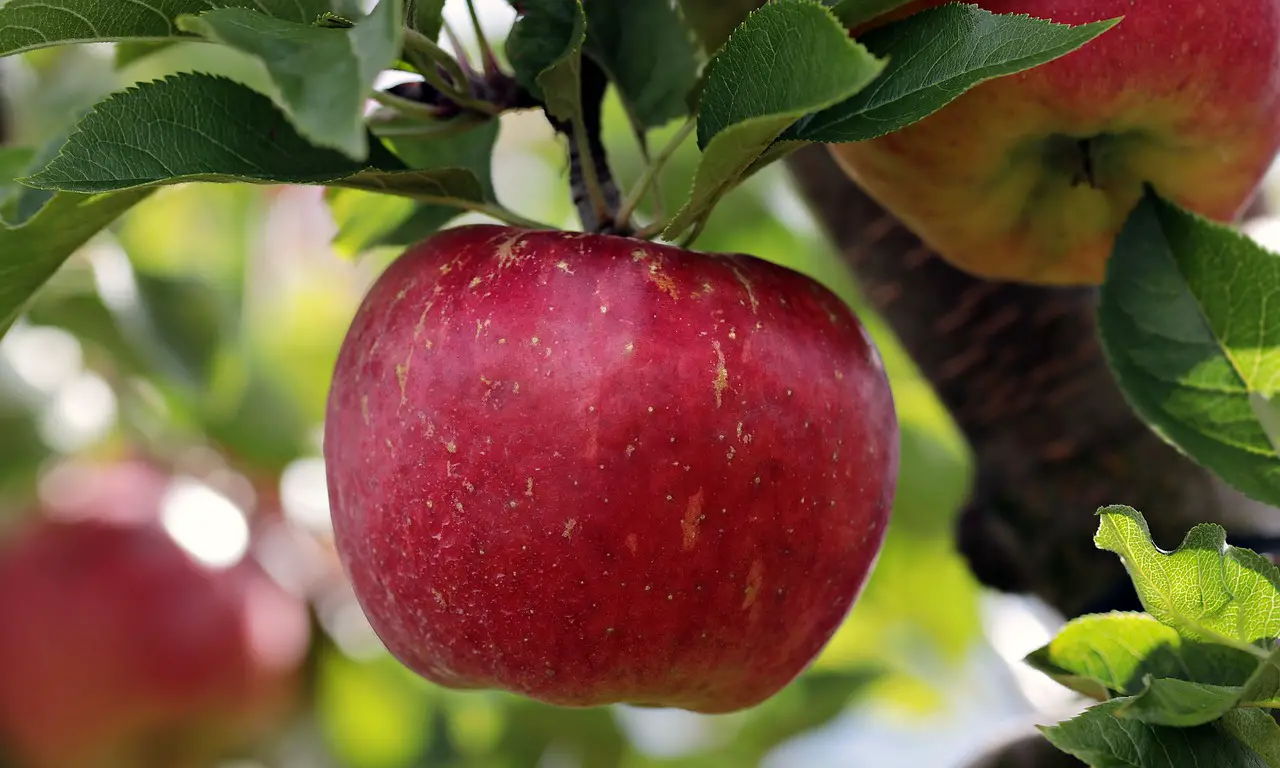Pruning young apple trees is essential for encouraging early fruit yield. Proper pruning techniques help shape the tree, promote healthy growth, and enhance fruit production. By focusing on key branches and removing excess growth, gardeners can ensure stronger trees that bear fruit sooner.
Apple trees are a popular choice for home gardeners. They provide delicious fruit and add beauty to any landscape. However, young apple trees require proper care to thrive and produce fruit. One of the most crucial aspects of care is pruning. Pruning involves selectively removing parts of the tree to promote better growth and fruiting.

Understanding the right time and method for pruning is vital. Young apple trees should be pruned during their dormant season, typically in late winter or early spring before new growth begins. This timing minimizes stress on the tree and allows it to recover quickly as it enters the growing season.
The Importance of Pruning Young Apple Trees
Pruning serves several purposes. First, it helps to establish a strong framework for the tree. A well-shaped tree can support more fruit and withstand environmental stresses. Second, pruning encourages healthier growth by improving air circulation and sunlight penetration. When branches are crowded, it can lead to disease and poor fruit production.
Additionally, pruning can help manage the size of the tree. By controlling its height and spread, gardeners can make harvesting easier. This is especially important for young trees that may not yet be producing a significant amount of fruit.

Key Benefits of Proper Pruning
- Encourages Early Fruit Production: Pruning can stimulate fruiting by redirecting energy to fruit-bearing branches.
- Enhances Tree Structure: A well-pruned tree has a strong structure that supports healthy growth.
- Improves Airflow: Removing excess branches allows better airflow, reducing the risk of disease.
- Increases Sunlight Exposure: Pruned trees receive more sunlight, which is crucial for photosynthesis and fruit development.
- Facilitates Harvesting: A manageable tree size makes it easier to pick apples when they are ripe.
Basic Pruning Techniques
When pruning young apple trees, there are a few basic techniques to follow. The goal is to create a strong central leader with well-spaced lateral branches. Here are some key methods:
- Thinning Cuts: This involves removing entire branches at their point of origin. It reduces crowding and allows more light to reach the remaining branches.
- Heading Cuts: This technique shortens a branch by cutting it back to a bud. It encourages growth below the cut, which can lead to more branching.
- Cutting Back: For young trees, focus on cutting back excessively long branches. Trim them to a bud facing outward to encourage outward growth.
Timing Your Pruning
The timing of pruning is critical to its success. Pruning during dormancy allows the tree to heal before the growing season begins. However, early spring is an ideal time as it prepares the tree for vigorous growth when temperatures rise. Avoid pruning in late summer or fall, as this can encourage new growth that won’t harden off before winter.
Tools Needed for Pruning
Having the right tools is essential for effective pruning. Here are some common tools used in the process:

| Tool | Description |
|---|---|
| Pruning Shears | Ideal for cutting small branches up to ¾ inch in diameter. |
| Loppers | Used for larger branches up to 1½ inches in diameter. |
| Saw | A pruning saw is suitable for cutting larger branches that cannot be handled by shears or loppers. |
| Gloves | Protect hands while handling tools and working with plants. |
Before beginning the pruning process, ensure all tools are clean and sharp. Dull tools can damage the tree and lead to infection. After pruning, it is essential to clean any cuts with a sterilizing solution to prevent disease.
By following these guidelines for young apple tree pruning, gardeners can promote healthy growth and encourage early fruit yield. The right techniques, timing, and tools ensure that young trees develop into productive and beautiful additions to any garden.
Understanding Tree Structure and Growth Patterns
To effectively prune young apple trees, it is essential to understand their natural growth patterns and structure. Apple trees have a specific architecture that influences how they should be pruned. The goal is to establish a strong central leader, which is the main trunk from which all other branches will grow.

Young apple trees typically exhibit a pyramidal shape. This structure allows sunlight to reach all parts of the tree, which is crucial for energy production through photosynthesis. Recognizing this natural form aids in making informed pruning decisions.
Identifying the Central Leader
The central leader is vital for maintaining the overall health and productivity of the tree. When pruning, it is important to identify this leader clearly and promote its growth. Here are some tips for identifying and maintaining the central leader:
- Look for the Tallest Stem: The central leader is usually the tallest stem in the tree. It should be straight and upright.
- Remove Competing Leaders: If there are multiple stems competing for dominance, select the strongest one and prune away the others.
- Encourage Vertical Growth: Prune lateral branches to ensure they do not overshadow the central leader.
Branch Selection and Management
In addition to establishing a strong central leader, selecting which lateral branches to keep is crucial for future fruit production. Not all branches will contribute positively to the tree’s growth and yield. Consider the following when selecting branches:
- Choose Well-Positioned Branches: Select branches that are spaced evenly around the trunk. This promotes balance and allows sunlight to reach all parts.
- Avoid Crossing Branches: Any branches that cross each other can cause damage and disease. Remove one of the crossing branches to maintain a healthy structure.
- Focus on Fruit-Bearing Potential: Select branches that show promise for fruit production. Younger, vigorous branches are typically more productive.
| Branch Type | Action |
|---|---|
| Lateral Branches | Keep well-positioned branches; prune excessively long or weak ones. |
| Water Sprouts | Remove these upright, vigorous shoots as they do not produce fruit. |
| Suckers | Eliminate suckers that grow from the base of the tree or roots. |
Common Mistakes in Pruning Young Apple Trees
Even experienced gardeners can make mistakes when pruning young apple trees. Recognizing common errors can help ensure proper tree development and early fruit yield. Here are some frequent mistakes to avoid:
- Pruning Too Much: Over-pruning can stress the tree and delay fruiting. It is better to prune conservatively, especially in early years.
- Poor Timing: Pruning at the wrong time of year can lead to sap loss and reduced vigor. Always prune during dormancy.
- Ignoring Tree Health: Failing to assess tree health before pruning can exacerbate existing problems. Always check for diseases or pests.
Signs of a Healthy Young Apple Tree
A healthy young apple tree will show several indicators that suggest it will thrive and produce fruit. Monitoring these signs can help ensure successful pruning and overall care:
- Vibrant Green Leaves: Healthy leaves indicate good photosynthesis and energy production.
- Strong Growth: Look for new growth in the form of shoots, which suggests that the tree is actively growing.
- Sturdy Trunk: A robust trunk signifies a stable foundation for future growth and fruiting.
- Absence of Pests or Disease: Regularly inspect for signs of common issues such as aphids or fungal infections.
The Role of Fertilization in Young Apple Tree Care
Alongside pruning, proper fertilization is essential for young apple trees. Fertilizers provide necessary nutrients that support healthy growth and fruit development. Here are key considerations for fertilizing young apple trees:
- Selecting the Right Fertilizer: Choose a balanced fertilizer that provides nitrogen, phosphorus, and potassium (N-P-K). A ratio of 10-10-10 is often suitable for young trees.
- Timing of Application: Fertilize in early spring, just before new growth begins. This ensures that nutrients are available when the tree needs them most.
- Avoid Over-Fertilization: Excessive fertilizer can lead to rapid growth but weak branches. Stick to recommended amounts based on tree age and size.
By understanding tree structure, avoiding common mistakes, and providing proper care through fertilization, gardeners can significantly enhance the potential for early fruit yield in young apple trees. The combination of thoughtful pruning and appropriate nutrition sets the stage for a fruitful harvest in subsequent seasons.
Pest and Disease Management for Young Apple Trees
Alongside pruning and fertilization, managing pests and diseases is crucial for the health of young apple trees. Pests can weaken the tree, while diseases can hinder growth and fruit production. Early detection and management can protect your trees and ensure a fruitful harvest.
Common Pests Affecting Apple Trees
Several pests commonly target apple trees. Knowing how to identify them and their impact on your trees will help in effective management:
- Apple Maggot: This pest lays eggs in the fruit, causing it to rot. Signs include small puncture marks on the surface.
- Codling Moth: The larvae of this moth burrow into the fruit, leading to significant damage. Look for entry holes in the apples.
- Aphids: These small insects feed on tree sap, weakening the tree. They can often be seen clustering on new growth.
- Spider Mites: These tiny pests thrive in dry conditions, causing stippling on leaves. Webbing may also be visible.
Preventative Measures Against Pests
Implementing preventative measures can significantly reduce the risk of pest infestations:
- Regular Inspections: Regularly check your trees for signs of pests or damage. Early detection is key to effective management.
- Maintain Tree Health: Healthy trees are less susceptible to pests. Follow good practices in watering, pruning, and fertilization.
- Use Physical Barriers: Apply nets or covers to protect fruit from pests during the growing season.
- Encourage Beneficial Insects: Ladybugs and lacewings are natural predators of aphids and other harmful insects. Planting flowers nearby can attract these beneficial insects.
Disease Identification and Management
Diseases can also pose a significant threat to young apple trees. Identifying common diseases early on is essential for preventing serious damage.
Common Diseases of Apple Trees
The following diseases are frequently encountered in apple orchards:
- Apple Scab: This fungal disease appears as dark spots on leaves and can lead to leaf drop. It thrives in wet conditions.
- Powdery Mildew: A white powdery substance on leaves and fruit indicates this fungal infection. It can stunt growth and reduce fruit quality.
- Cedar Apple Rust: This disease requires both cedar trees and apple trees to complete its life cycle. It causes yellow-orange spots on leaves.
- Fire Blight: A bacterial disease that causes branches to wilt and turn black. It often appears after flowering.
Preventative Measures Against Diseases
Preventing diseases involves a combination of good cultural practices and timely treatment:
- Prune for Airflow: As discussed earlier, proper pruning enhances airflow, reducing humidity around the tree and decreasing disease risk.
- Choose Disease-Resistant Varieties: When planting new trees, select varieties known for their resistance to common diseases.
- Apply Fungicides: Use fungicides as a preventative measure, especially during wet seasons. Always follow label instructions for application rates and timing.
- Sanitize Tools: Clean pruning tools between cuts to prevent the spread of disease from one part of the tree to another.
The Role of Watering in Young Apple Tree Care
Proper watering is essential for young apple trees. Watering not only supports overall health but also complements pruning and fertilization efforts. Understanding how much and when to water can make a significant difference in tree development.
Watering Techniques for Young Apple Trees
The following techniques are beneficial for efficient watering of young apple trees:
- Deep Watering: Water deeply rather than frequently to encourage roots to grow deeper into the soil. This helps the tree become more drought-resistant.
- Drip Irrigation: Installing a drip irrigation system can provide consistent moisture directly to the roots without wetting the foliage, reducing disease risk.
- Mulching: Apply mulch around the base of the tree to retain moisture, suppress weeds, and regulate soil temperature.
Signs of Water Stress
Recognizing signs of water stress is crucial for timely intervention. Look for the following symptoms:
- Wilting Leaves: Leaves may droop or curl when the tree does not receive enough water.
- Pale or Yellow Leaves: A lack of water can cause leaves to lose their vibrant color and turn yellow.
- Crown Dieback: If branches are dying back from the tips, it may indicate insufficient watering or drought stress.
By managing pests and diseases effectively, along with proper watering techniques, gardeners can enhance the health and productivity of young apple trees. This comprehensive care approach ensures that trees remain strong and capable of yielding delicious fruit earlier in their growth cycle.
Additional Tips for Successful Young Apple Tree Care
Beyond pruning, fertilization, pest and disease management, and watering, there are several other practices that can help cultivate healthy young apple trees. These practices will further enhance the growth potential and fruit yield of your trees.
Choosing the Right Location
The location where you plant your young apple trees significantly impacts their growth and productivity. Consider the following factors when selecting a site:
- Sunlight: Apple trees require full sun for at least six hours a day. Ensure the chosen spot receives ample sunlight to promote healthy growth.
- Soil Quality: Well-draining soil rich in organic matter is ideal for apple trees. Conduct a soil test to check pH levels and nutrient content.
- Protection from Wind: Plant trees in areas shielded from strong winds, which can cause physical damage and hinder pollination.
Pollination Considerations
Apple trees are not self-pollinating, which means they require pollen from other apple varieties to produce fruit. To enhance pollination:
- Plant Multiple Varieties: Ensure that you plant at least two different apple tree varieties that bloom around the same time to ensure cross-pollination.
- Attract Pollinators: Plant flowers nearby to attract bees and other pollinators. This can significantly improve fruit set.
Seasonal Care Practices
Different seasons require specific care approaches for young apple trees. Here are some seasonal tips:
- Spring: After winter dormancy, inspect for any winter damage, apply fertilizer, and prune if necessary.
- Summer: Monitor for pests and diseases, water consistently, and mulch to retain moisture during hot months.
- Fall: Prepare trees for winter by ensuring adequate hydration. Remove fallen leaves to prevent disease spread.
- Winter: Protect young trees with tree guards if necessary to prevent rodent damage. Prune during dormancy to shape the tree.
Final Thoughts
Caring for young apple trees through proper pruning, fertilization, pest and disease management, and watering ensures that your trees will thrive and produce an abundant early fruit yield. Understanding the specific needs of your trees and adapting your practices accordingly is essential for success.
The journey of growing apple trees can be rewarding, offering not only delicious fruit but also the beauty of nature in your garden. By following these guidelines, you empower your young apple trees to develop into strong, productive specimens capable of providing bountiful harvests for years to come.
In conclusion, investing time and effort into the early stages of your apple trees’ life pays off with increased yields and enhanced tree health. Whether you’re a novice gardener or an experienced horticulturist, implementing these practices will help you cultivate a fruitful apple orchard. Happy gardening!
